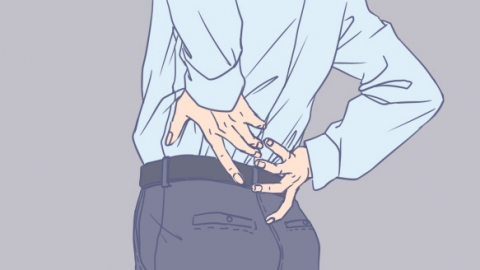What are the self-correction methods for leftward腰 deviation?
Generally, a leftward tilt of the waist is often related to poor posture, muscle imbalance, or minor spinal misalignment. It can be improved through targeted self-correction methods, including wall-standing correction, unilateral stretching and relaxation, core muscle training, adjustment of sitting and standing postures, and using a foam roller to release tight muscles. Detailed explanations are as follows:

1. Wall-standing correction: Stand with feet shoulder-width apart, back, hips, and back of the head against the wall, arms naturally hanging down. Adjust the lower back to press gently against the wall, keep the head in a neutral position with eyes looking straight ahead. Hold for 10–15 minutes per session, 2–3 times daily. This helps realign spinal forces and correct waist deviation.
2. Unilateral stretching and relaxation: Stretch tight muscles on one side of the waist. Stand with feet shoulder-width apart, raise the right hand overhead and slowly bend sideways toward the left, feeling a stretch along the right side. Hold for 15–20 seconds, then return to center. Repeat on the opposite side by raising the left hand and bending to the right. Perform 3–5 sets per side to relieve unilateral muscle tension.
3. Core muscle training: Improve spinal stability through exercises like planks. Lie face down, support your body on forearms and toes with elbows bent at 90 degrees directly under shoulders. Keep the body in a straight line from head to ankles, engaging abdominal and pelvic floor muscles. Hold the position steadily to strengthen core muscles and maintain spinal balance.
4. Adjustment of sitting and standing posture: Maintain proper posture daily. When sitting, choose a chair with lumbar support and keep the lower back pressed against it, avoiding slouching or leaning to one side. When standing, keep chest up, head level, and shoulders relaxed; avoid carrying heavy loads on one shoulder (e.g., single-strap bags). Walk with even weight distribution on both feet to prevent worsening of waist misalignment.
5. Foam rolling for muscle relaxation: If the left side of the lower back feels stiff, place a foam roller beneath the affected area and slowly roll and apply gentle pressure to the tense region. Roll for 5–8 minutes once daily to relax tight muscles, improve blood circulation, and reduce muscle spasms.
When performing self-correction exercises, movements should be slow and gentle to avoid excessive strain that may cause discomfort. If there is no improvement or if pain develops, seek medical evaluation promptly. Avoid prolonged sitting or standing, take regular breaks to move the lower back, and maintain long-term spinal health.




